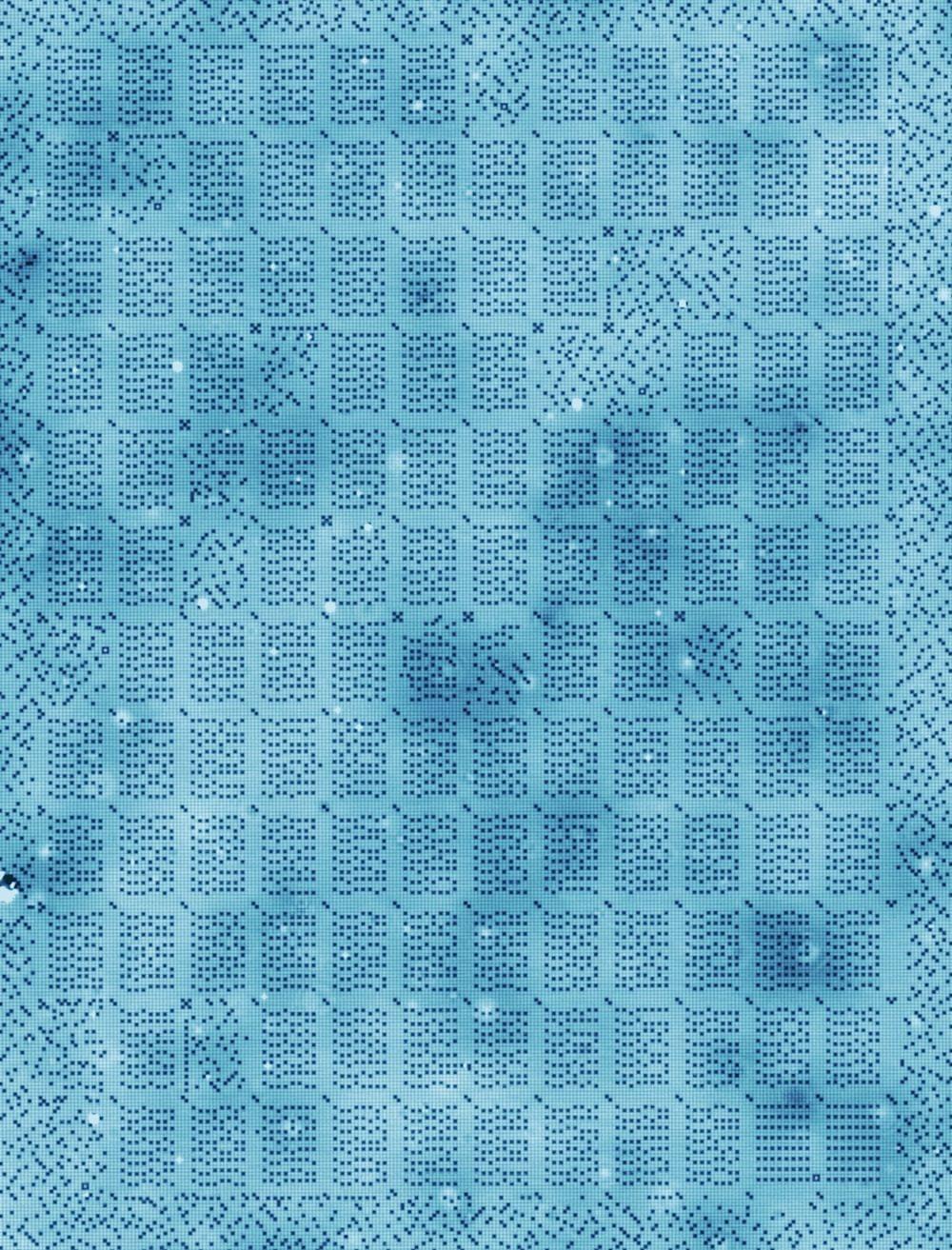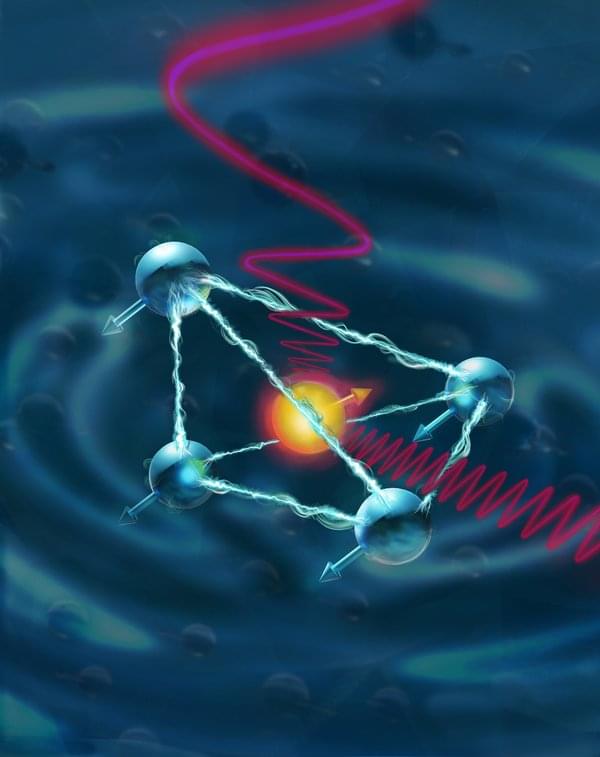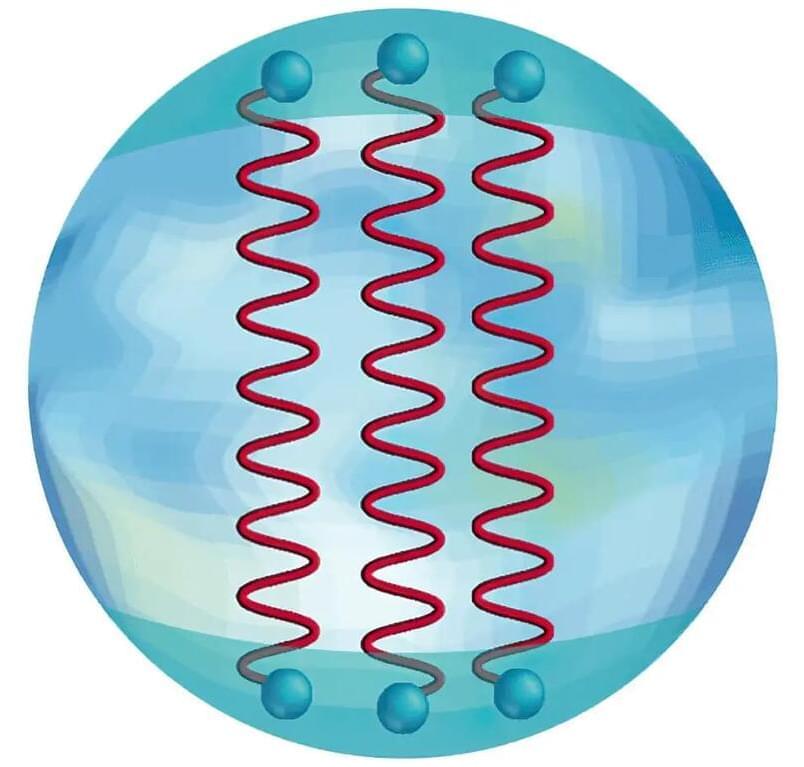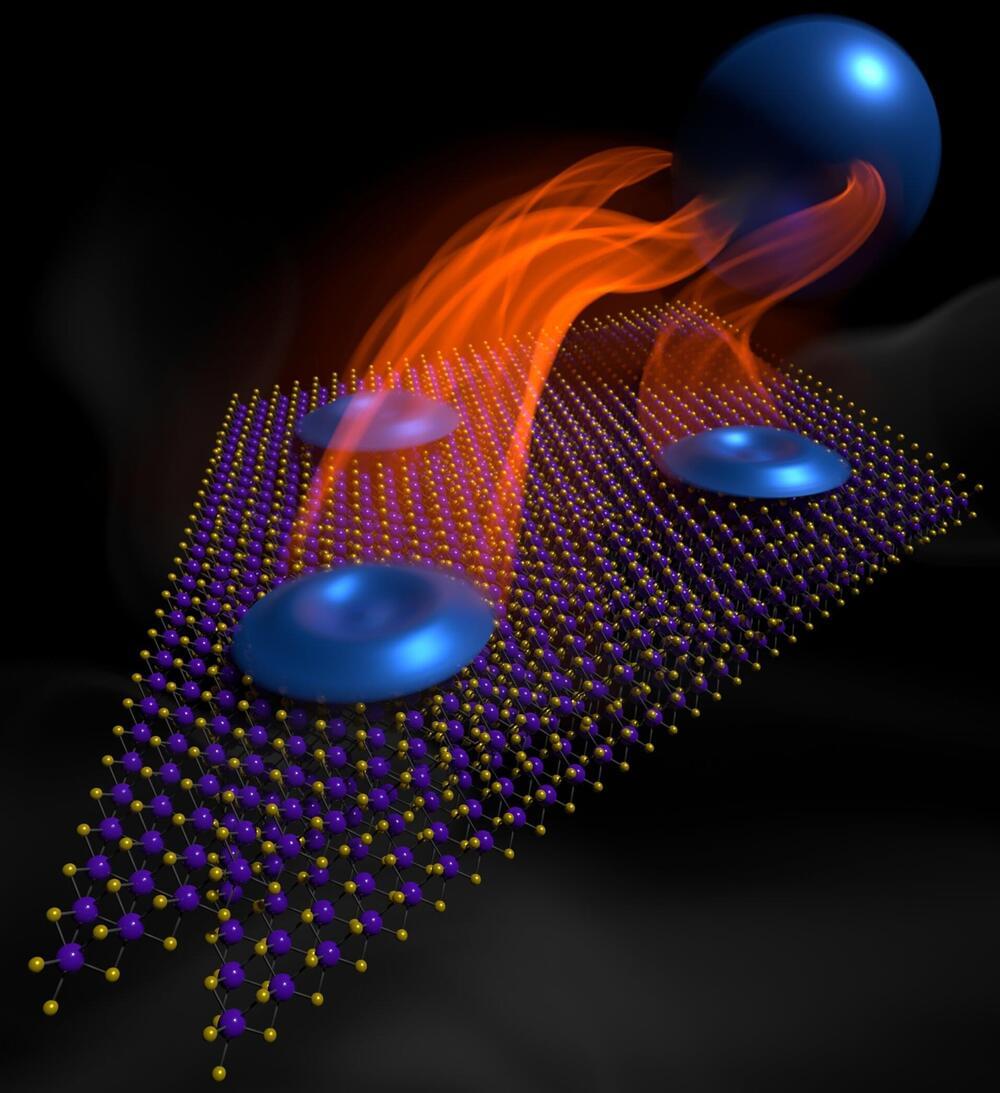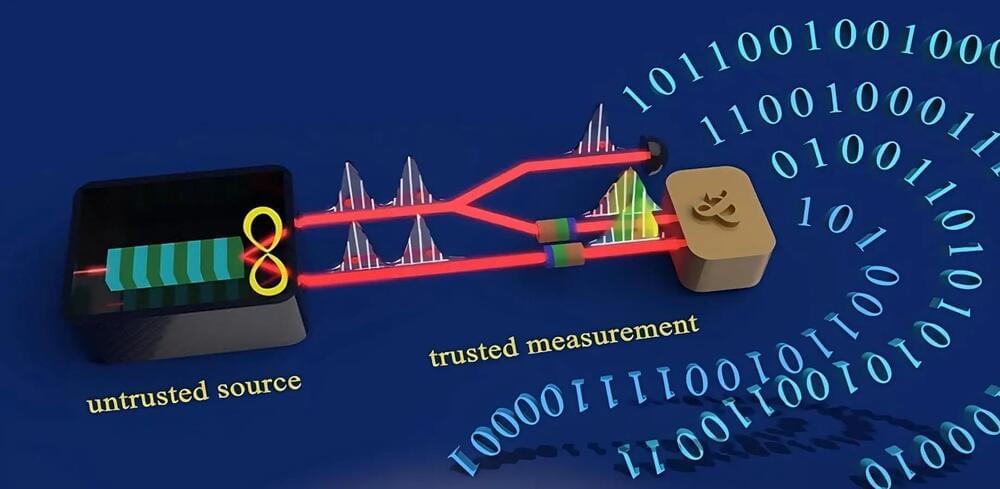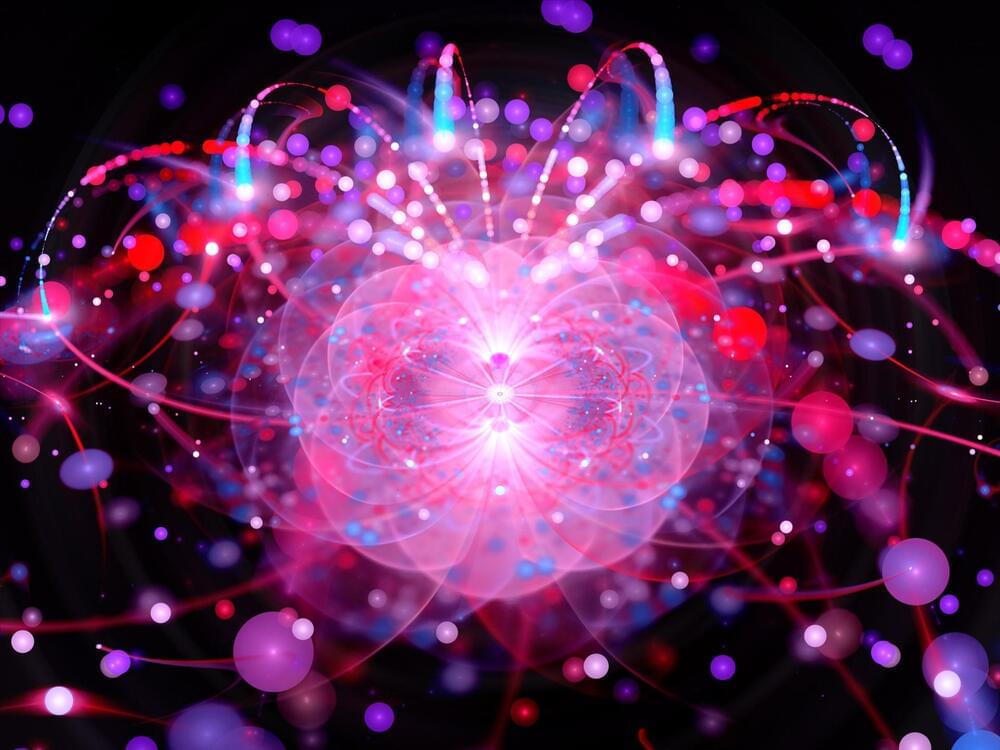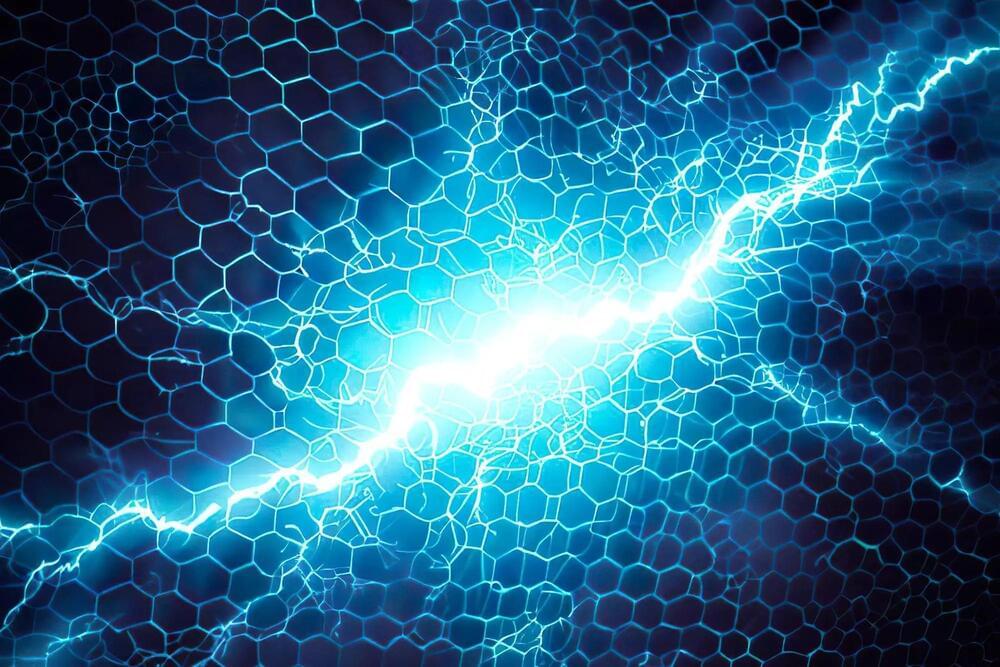Jul 1, 2023
Quantum Breakthrough: The First Ever Realization of a Laughlin State
Posted by Paul Battista in categories: particle physics, quantum physics
The discovery of quantum Hall effects during the 1980s unveiled new forms of matter termed “Laughlin states”, named after the American Nobel laureate who successfully characterized them theoretically.
These exotic states uniquely appear in two-dimensional materials, under extremely cold conditions, and when subjected to a profoundly strong magnetic field. In a Laughlin state, electrons constitute an unusual liquid, where each electron dances around its congeners while avoiding them as much as possible.
Exciting such a quantum liquid generates collective states that physicists associate with fictitious particles, whose properties drastically differ from electrons: these “anyons” carry a fractional charge (a fraction of the elementary charge) and they surprisingly defy the standard classification of particles in terms of bosons or fermions.

